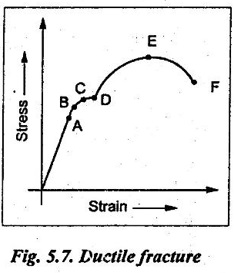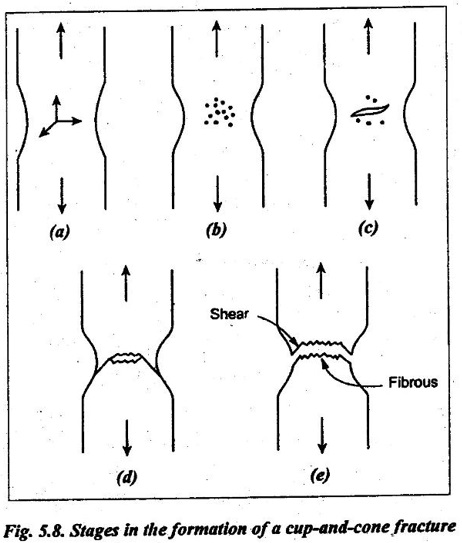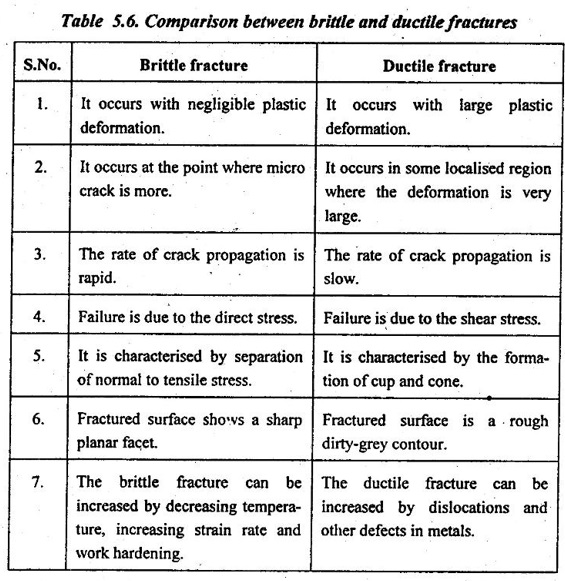Ductile fracture may be defined as the fracture which takes place by a slow propagation of crack with appreciable plastic deformation.
DUCTILE FRACTURE
1. What is Meant by Ductile Fracture?
✔ Ductile fracture defined:
Ductile fracture may be defined as the fracture which takes place by a slow propagation of crack with appreciable plastic deformation.
✔ When a ductile specimen is subjected to tensile stress, the stress-strain curve can be obtained as shown in Fig.5.7.

✔ In Fig.5.7, at point F the fracture takes place.
2. Mechanism of Ductile Fracture
✓ The various stages in the development of a ductile fracture, also called cup-and-cone fracture is shown in Fig.5.8.
✔ Fig.5.8 (a) indicates the formation of a neck, when a ductile specimen is subjected to tensile stress. When the tensile stress is increased beyond the ultimate tensile stress (i.e., at point E in Fig.5.7), a neck is formed in the specimen.
✔ The continuation of the plastic deformation produces many fine cavities in the specimen, as shown in Fig.5.8 (b).
✔ Under continued straining, these cavities grow and form a central crack, as shown in Fig.5.8 (c).
✔ The crack grows in a direction perpendicular to the axis of the specimen until it approaches the surface of the specimen. It then propagates to the surface of the specimen to form the cone part of the fracture, as shown in Fig.5.8 (d).
✔ The central 'cup' region of the fracture has a very fibrous appearance, as shown in Fig.5.8.

1. Observations
The following observations can be made during the ductile fracture:
1. A ductile fracture occurs by a slow tearing of the metal with the expenditure of considerable energy.
2. Unlike brittle fracture, a ductile fracture presents a rough dirty-grey surface.
3. Brittle Fracture Vs Ductile Fracture
The comparison between brittle and ductile fractures is presented in Table 5.6.

4. Prevention of Ductile Fracture
In order to prevent the ductile fracture, the material should have the following characteristics :
✔ The material should have fine grains.
✔ It should have higher hardness value.
✔ It should have higher Young's modulus and cohesive energy.
✔ It should not have any defects/dislocations.
No comments:
Post a Comment